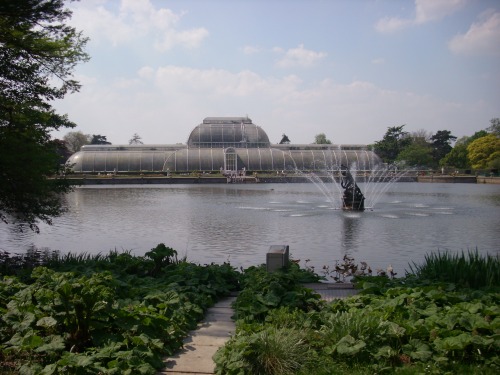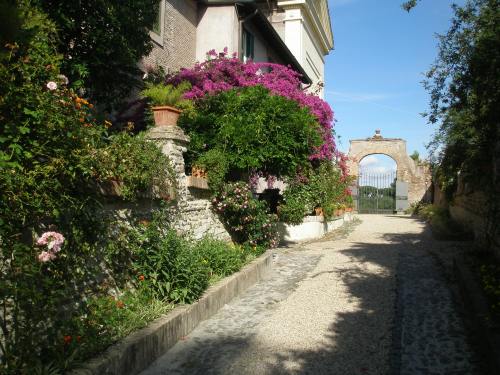As we walk around with our “Rachel” haircuts and “Twilight” soundtracks, it is easy to see that television shows and films influence several aspects of our lives. But what about travel?
In order to determine how much film shapes our tourist tastes and trends, we must first speculate about the popularity of film and to what degree it affects human behavior. In most Western civilizations, the popularity of television and cinema is quite obvious; a 2005 study from Cal State University revealed that over 99% of American households own at least one TV, while the Hollywood Entertainment Museum reported that Americans spent over $16.9 billion per year on movies in the 1990s. Film is beloved by modern society and one’s choice of programs is often seen as an extension of their personality.
The effects of film on society, however, are not as easy to prove; a good example of this would be the decades-old violence-in-the-media debate. Often, the best we can do is measure it in consumer trends, such as the countless fashion accessories that have sold out due to exposure on shows like “Sex and the City.”
Destination Images
In terms of cities and cultures, film frequently helps people build their perceptions of the outside world (for better or worse); therefore, it is inevitable that tourism will be heavily affected by film.
There are two kinds of perceptions:
- induced images – visions that have either been cooked up or promoted by various agencies and businesses
- organic images – impressions that one receives through non-commercial means, whether it be through a literary work, hearsay, or film
Though both kinds of images can be created with film content, the organic image is our focus. As a person receives more and more of these organic images, an overall destination image is created; John Crompton, a distinguished tourism and marketing professor, defines this as “the sum of beliefs, ideas, and impressions that a person has of a destination.” There are millions of examples of famous destination images around the world; when someone mentions Paris, the picture that pops into your head is probably a romantic scene, perhaps a picnic on the bank of the Seine with the Eiffel Tower in the background. While it is true that tourist agencies promote this ideal scenario to increase visits (therefore producing induced images), a large part of Paris’ reputation has been created by books, movies, and general word of mouth; scores of films, such as the recent “Moulin Rouge,” have shown Paris in a dreamy, bohemian light. Unfortunately, not all destination images match their destinations; this leads to a discrepancy between tourist expectations and realities.
Tourism Motivators
Understanding why certain film-created destination images attract people (and ultimately affect tourist tastes and trends) is a complex process; it is beneficial to review what drives tourism in the first place. What makes people want to visit certain places? This question has elicited several theories, though most seem to agree on one point: everyone’s experiences and reasons vary.

My first memory of Big Ben? Why, that would Peter Pan!
Tourism can be as simple as a theme-park vacation devoid of any meaning deeper than novelty, and it can be as complex as a keystone in the spiritual journey of an individual’s life. Most tourists have a mixture of different motives that compel them to visit a particular spot, even if they only comprehend or reveal one of them; for example, the improvement of an individual’s social status probably figures into many vacations, but most would not willingly admit to such an allegation. Many have attempted to broadly categorize all of the possible motivations for tourism, such as Dumazedier with his three all-encompassing prongs, but for someone with the intention of specified analysis, Thomas’ exhaustive list of reasons is easier to draw on.
He loosely groups similar motives together:
- Ethnic celebrations
- Relaxation and pleasure
- Educational and cultural motives
- Other (ranging from better weather to conformity)
Because there is such a variety of subject matter in films, it is possible for viewers to glean any of these motivations from their viewing choices. However, Australian professors Kamal Singh and Gary Best propose that Riley’s application of Iso-Ahola’s “seeking” concept to tourist motivation is exceptionally accurate; essentially, this means that tourists are traveling to locations mainly to seek famous film sites. This explanation covers the “just to know/say that I’ve been there” mentality.
Author Sue Beeton suggests that both fictional and non-fictional films are strong motivators, especially when the film location is prominently featured in the film. In a study of the “Lord of the Rings” film sites by the two aforementioned Australian professors, groups of visitors were questioned about why they chose to travel to the attractions. The three main reasons, in order of popularity, were:
- To see the movie set.
- To see the natural scenery shown in the film.
- To feel a closer connection to the plot and its characters.
Some destinations, such as random movie lots or relatively unknown cities, become famous simply because they are featured in film; many times these sites are emptied after filming is completed, yet tourists still make trips to see them. MacCannell gives the great example of the site where the “Bonnie and Clyde” shootout scene was filmed; though the “tourist attraction” in question is simply a patch of grass in the middle of Texas, people continue to visit (it also doesn’t hurt that a big sign on the highway advertises the site).
Site Longevity
In rare cases, some movie sets are left standing. Before Kevin Costner built a baseball field on the Lansing family farm for his 1989 movie, “Field of Dreams,” the small town of Dyersville, Iowa (population: 4,000) was virtually unheard of; the year the film was released, over 70,000 people visited, and it is now one of Iowa’s top tourist attractions.
Many times, the natural scenery shown in films is a bigger “pull factor” than the film itself; if scenery is prominently featured in a movie, it is essentially free advertising for the region. This is especially beneficial to the tourism agencies of that area, as the film equipment used to capture the scenery is most likely nicer than the equipment they have. Out of all the countries in the world, I most associate beautiful scenery with England; movies like “Pride and Prejudice,” “Miss Potter,” and “Sense and Sensibility” all showcase rolling hills and lush, green gardens. The year that “Sense and Sensibility” was released, Saltram House, where most of the movie was filmed, saw a 39% increase in tourism. Another classic example from the UK would be the amount of publicity the National Wallace Monument in Stirling, Scotland got after the release of the movie “Braveheart;” their number of visitors increased by 52%.
Film can also boost tourism or change the destination image of an already known place. The best current example of this is, of course, the correlation between the boost in New Zealand tourism and the “Lord of the Rings” movie trilogy.
However, there are many historical sites that have seen an increased number of visitors whenever a film is focused on them:
- The beaches of Normandy have been a tourist attraction for many years, yet they saw a 40% increase in visitors the year the film “Saving Private Ryan” was released.
- After fatally shooting American president John F. Kennedy, assassin Lee Harvey Oswald hid out on the 6th floor of a rundown book depository in Dallas, Texas, now a museum; after the movie “JFK” was released, the number of visitors increased by 45%.
- Salzburg has long been known as the center of all things Baroque, and gems like Mozart’s birthplace have been attracting tourists for years; however, after “The Sound of Music” was filmed in Salzburg, even larger waves of travelers came to see the breathtaking sights shown in the movie. According to the Salzburg tourism bureau, the “Sound of Music” tour is the biggest tourist attraction for the city and one of the largest in Austria.
As with any type of tourism, film-induced tourism affects the destinations it surrounds. When Julia Roberts and Hugh Grant starred in the popular movie “Notting Hill,” which was filmed in the London neighborhood of the same name, real estate prices skyrocketed; the borough, which had been seen as a somewhat dodgy area of town, suddenly became a trendy place to live.

Mirabell Gardens - all that's missing is a flock of Von Trapp children!
Whether most film-induced tourist sites will remain attractive to travelers is hard to tell, as film and film-induced tourism are still relatively new. Indeed, it is easier to point out the film-induced tourist attractions and effects that were short-lived. During the late 1990s, the popular television show “Dawson’s Creek” was filmed in Wilmington, North Carolina; the town became somewhat of a household name (to teenagers, at least) and a popular place to visit due to accessibility of the cast. However, now that the show has been off the air for a while and the cast no longer films there, I have not heard anything about Wilmington; unless another show is filmed there, I doubt I ever will. This will probably happen to most film-induced tourism sites.
The Devils Tower National Monument in the Black Hills (technically, it is situated in Wyoming) has been a popular tourist attraction for many years. In 1977, the rock played a significant role as a UFO landing station in the movie “Close Encounters of the Third Kind,” and the number of visitors increased by a whopping 74%; 33 years later, hundreds of “sci-fi” geeks and movie buffs are still attracted to the park. However, Devils Tower existed before the movie was released, and many people visit the national park simply to climb it or witness a great geographical landmark, so truly it is not a good example of long-term film-induced tourism; the existence of Hollywood is perhaps a better case. Overall, more time is needed to discover whether or not attractions created or promoted by films can stand up to existing attractions, such as the Coliseum or the Taj Mahal.
Sources:
- Bennett, M.M. (1996): The Marketing of Tourism Products, International Thomson Business Press.
- Singh, Kamal and Best, Gary (2004): “Film-Induced Tourism: Motivations of Visitors to the Hobbiton Movie Set as Featured in The Lord Of The Rings.” International Tourism and Media Conference Proceedings. 24th-26th November 2004. Melbourne: Tourism Research Unit, Monash University. 98-111.
- Tourism websites for the aforementioned attractions and cities.







